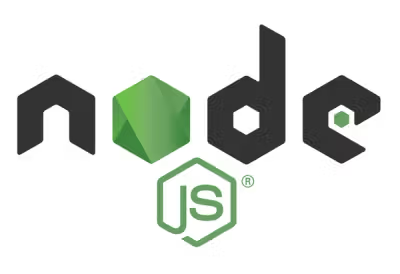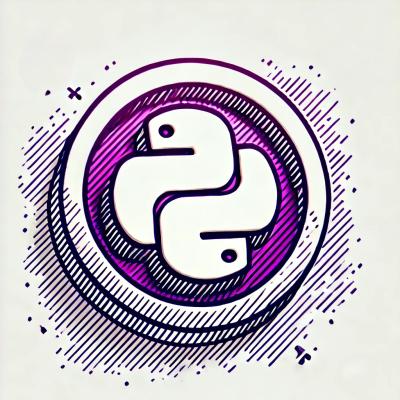
A Virtual Reality Web Video Player
This javascript library makes it easy to play VR videos from a browser.
You can use it to play VR videos in HTC Vive, Oculus Rift, and Samsung
Gear. It provides the functionality which is often useful with VR videos,
such as headset movement detection; ambisonic audio interface; hand-held
controller interface and rendering; rendering of 3D OBJ objects over the
video layer, or inside the VR scene; crosshairs support, with animated
buttons, or animated crosshairs.
When embedded in an HTML page, Veri will set up a WebGL canvas and a THREE.js WebVR environment which renders a VR video. It can play stereoscopic videos (side-by-side and
top-to-bottom) as well as monoscopic videos.
To view the video you will need a browser which supports WebVR. For HTC
Vive this means you will need to download a special build of Chromium. For
Oculus Rift you will need a WebVR version of Mozilla, and on Samsung Gear you
can use the Samsung Internet browser. See WebVR Info for
more information on that.
For a regular PC or Mac with no headset attached, you can still view 360
videos, or add the WebVR API Emulation extension which shows you what would be seen on the headset.
For more information see the veri Home Page
Worked Example
For basic usage, you must include the veri library and a video element:
<script src="../dist/veri.js"></script>
<video
id="veri"
crossorigin="anonymous"
autoplay
loop
src="https://threejs.org/examples/textures/MaryOculus.webm"
style="display: none; width: 100%; height: 100%; background: black;" />
Then you setup the VR options and start playing:
var veri = new Veri();
veri.setup({
controls: "auto",
vrEnabled: true,
stereoscopic: "left-to-right",
initializeCanvas: true,
camera: {
fov: 90,
aspect: window.innerWidth / window.innerHeight,
near: 0.1,
far: 1000
},
renderer: {
width: window.innerWidth,
height: window.innerHeight
},
light: {
position: Veri.vec3(2, 2, 2)
}
});
veri.start();
For True VR
True VR experiences require a VR headset, such as HTC Vive, Oculus Rift, or Samsung Gear. This implies two camera perspectives will be rendered. The implementation is based on WebVR and Three.js.
Full Functionality List
The VR plugin supports the following:
- setup a THREE js canvas
- setup a scene: camera, lighting, walls
- setup VR (requires VR hardware)
- setup stereoscopic VR, which provides depth
- side-by-side frames supported
- top-to-bottom frames supported
- setup a monoscopic 360 video
- crosshairs - a small object at the center of the field of vision for pointing to targets in the VR scene
- default circle animation
- supports sprite animation
- buttons can be animations
- the crosshairs can be animated
- setup interaction objects using an overlay. Objects are 3D objects and their textures, provided in OBJ file format.
- overlay fixed in the camera's reference frame
- overlay fixed in the video's reference frame
- interaction handling
- device-driven movement (rotation of mobile device, movement of headset)
- panning with mouse drag for 360 video
- zoom in/out with mouse wheel for 360 video
- limit interaction space to avoid overlap with control bar on top and bottom
- keyboard control
- RayCasting - detect which object was clicked in the scene
- audio implemented by jsAmbisonics
- positional audio sources
- ambisonic audio sources
- general event emitter functionality
The following are not yet supported:
- iPhone 360 video
- debugging helpers
Complete annotated list of configuration options
veri.setup({
controls: "auto",
vrEnabled: true,
polyfillWebVR: false,
stereoscopic: "side-by-side",
debug: {
showAxis: false,
showFPS: false
},
camera: {
pos: Veri.vec3(0, 0, 0),
fov: 35,
aspect: window.innerWidth / window.innerHeight,
near: 0.1,
far: 1000,
direction: Veri.vec3(0, 0, -1)
},
crosshairs: {
type: "animated-crosshairs",
debug: false,
targets: [ {
name: "play",
direction: Veri.rot3(0, -100)
}, {
name: "stop",
direction: Veri.rot3(0, -80)
}],
hitRadius: 10,
hitTime: 6000,
sprite: {
src: "../resources/sprite/circle.png",
distance: 300,
columns: 8,
rows: 8,
count: 60,
objWidth: 60,
objHeight: 60,
width: 60,
height: 60
}
},
crosshairs: {
type: "animated-buttons",
debug: false,
targets: [{
name: "start",
direction: Veri.rot3(0, -100),
hitRadius: 16,
hitTime: 6000,
sprite: {
direction: Veri.rot3(0, -100)
}
}],
sprite: {
src: "resources/img/crosshairs.png",
distance: 380,
objWidth: 50,
objHeight: 50,
columns: 1,
rows: 1,
count: 1
}
},
renderer: {
width: window.innerWidth,
height: window.innerHeight
},
sphere360: {
radius: 500,
hide: false
},
audio: {
type: "positional",
src: "https://upload.wikimedia.org/wikipedia/commons/2/2a/20091104_Alisa_Weilerstein_and_Jason_Yoder_-_Saint_Sa%C3%ABns%27_The_Swan.ogg",
position: Veri.vec3(0, 0, -10)
}
objects: {
stopButton: {
resource: 'resources/obj/s-stop.obj',
position: Veri.vec3(-1, 0, -5),
color: 0xc8955c,
movesWithCamera: false,
handler: clickHandler
},
goButton: {
resource: 'resources/obj/s-rev-fwd.obj',
position: Veri.vec3(1, 0, -5),
color: 0xc8955c,
movesWithCamera: false,
handler: clickHandler
}
},
light: {
position: Veri.vec3(2, 2, 2)
}
});
Events
click - emitted when the user clicked on an object.
veri.on('click', function(objName) {
console.log('you clicked on ' + objName);
});
frame - emitted on every frame, it contains a Vector3 which reflects the
camera direction. For example, you can use this to check if the viewer
is currently looking at a specific angle range.
Sample code to check angle:
veri.on('frame', function(camera) {
var directionOnXZPlane = camera.projectOnPlane(Veri.vec3(0, 1, 0));
var quaternion = (new THREE.Quaternion()).setFromUnitVectors(cameraCenter, directionOnXZPlane);
var euler = (new THREE.Euler()).setFromQuaternion(quaternion);
var angle = euler.y;
});
ready - emitted when the 3D scene is built.
veri.on('ready', function(objName) {
console.log('vr setup complete');
});
targetEnter - crosshairs have entered a named target.
veri.on('targetEnter', function(target) {
console.log('looking at ' + target);
});
targetExit - crosshairs have exited a named target.
veri.on('targetExit', function(target) {
console.log('no longer looking at ' + target);
});
targetStay - crosshairs are still inside a named target.
veri.on('targetStay', function(target) {
console.log('still looking at ' + target);
});
targetSelected - crosshairs have stayed inside a named target enough time so that the target is now selected ("clicked").
veri.on('targetSelected', function(target) {
console.log('crosshairs selected target: ' + target);
});




